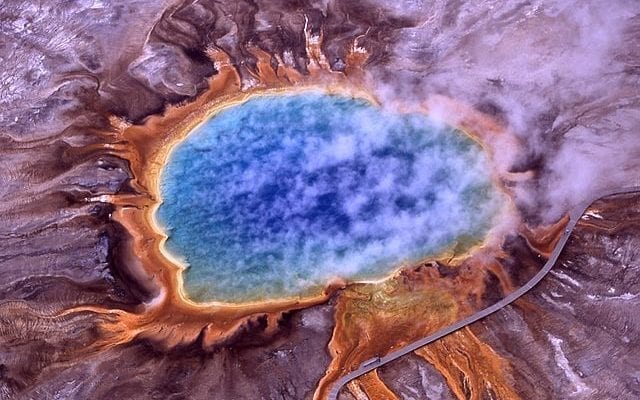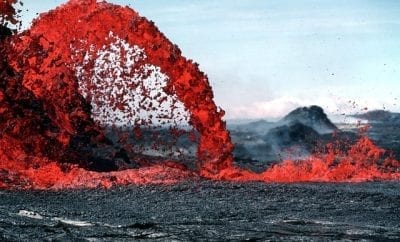
News
The Yellowstone Supervolcano
Yellowstone National Park is known for being an area where one can go and enjoy the natural wonders of Earth. A place where you can check out Old Faithful in all of its glory or get a glimpse at the stunning diversity of wildlife. But what many people don’t know is that the national park sits atop a supervolcano. If the sound of that seems to have an ominous ring to it, you’re not mistaken.
With the eruptions and damage being caused by Kilauea on Hawaii’s big Island, volcano activity is on everyone’s mind. With the potential to cause so much damage to surrounding areas and to the environment as a whole, it’s a natural phenomena that we all must deal with. The Yellowstone supervolcano is different from Kilauea in many ways. First, it’s mostly hidden – and massive.
The supervolcano hidden beneath Yellowstone is so vast, it can only be fully seen from low-Earth orbit. It’s crater is a immense 45 miles across, and beneath it lies a bubbling cauldron of several tens of thousands kilometers of magma. To put the enormity of this into perspective, picture this: a large reservoir within the supervolcano contains enough magma to fill the entire Grand Canyon 11 times, and that’s not including other known chambers within its interior. 
Scientists have known that a supervolcano lies beneath Yellowstone since the 1960’s, but scientists did not know one important detail until the 1980’s – this thing is fully alive and could still potentially erupt. The eruption of Yellowstone would be thousands of times more violent than the eruption of Mount St. Helen’s in 1980. A worst-case scenario eruption would result in massively catastrophic consequences for not only the United States but also on a global scale.
Scientists say that Yellowstone has erupted three times in history: 2.1 million years ago, 1.3 million years ago, and 640,000 years ago. This shows a cycle of eruption every 660,000-800,000 years, causing concern from scientists over its next eruption.
So what would an eruption look like? Well, scientists don’t know exactly, but there have been predictions by various experts. An eruption would start with a string of earthquakes in Yellowstone, which would cause the roof rock to fail. A tremendous amount of ash and lava would shoot out, reaching heights of around 25 km, and sustain itself for several days before ceasing. Pyroclastic flows, this mixture of ash, lava and superheated gas, would theoretically travel up to 62 miles, essentially consuming the entirety of Yellowstone.

Pyroclastic Flows
In the aftermath, the harmful mixture of ash in the air would wreak havoc on roads, sewer systems, buildings, agriculture, ecosystems, and a number of other things. If inhaled, it would lacerate your lungs, making it impossible to breathe. The ash would also cause the sky to considerably darken, causing temperatures to plummet. An estimate by the Federal Emergency Management Agency cited the total economic impact on the U.S. alone would be around $3 trillion. While this wouldn’t spell the end of the civilization as a whole, it would certainly impact the entirety of the planet, changing it for the worse.
Sound Bleak? Here is some news to cheer you up – it is very unlikely an eruption of this magnitude will happen, especially within our lifetime. According to the U.S. Geological Survey (USGS), they say the probability of an eruption of this size is exceedingly low. While we still don’t know when the next volcanic eruption will occur, scientists continue to closely monitor Yellowstone for any changes. Until then, I wouldn’t worry. Too much.



0 comments